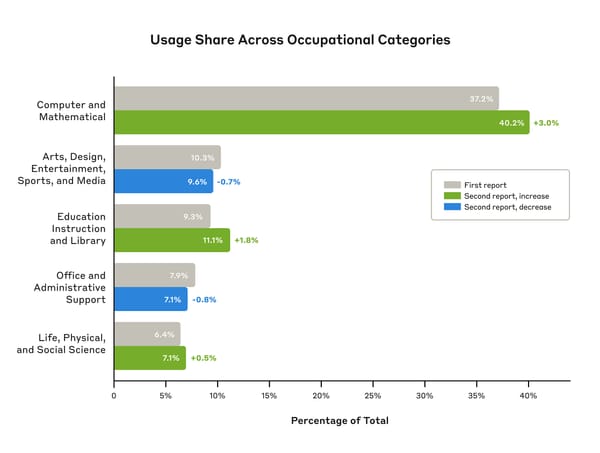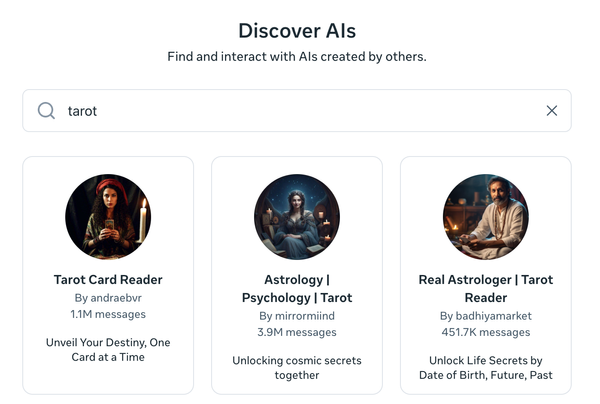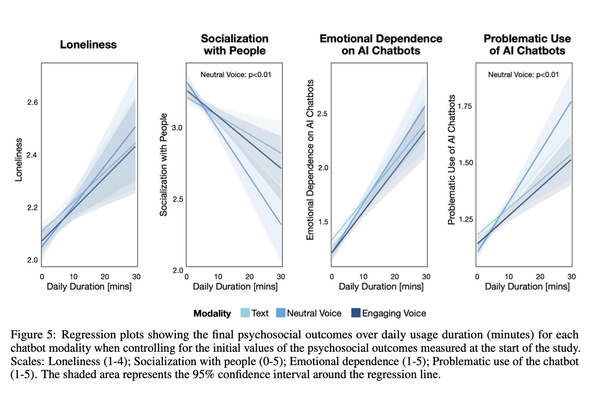Twitter pulls a Patreon
Will Super Follows shake up the media industry?

Today let’s talk about Twitter’s move into subscriptions, and some of the more unpredictable effects it might have on the media landscape.
On Thursday Twitter held an event for analysts, and like Snap before it, the company is betting that good times are here to stay. Here’s Lauren Feiner at CNBC:
Twitter said Thursday it aims to have 315 million monetizable daily active users (mDAUs) by the end of 2023 and to at least double its annual revenue in that year. The announcement was made in an SEC filing. […]
This is the first time Twitter has set long-term goals for revenue and daily users and it comes ahead of the company’s analyst day on Thursday afternoon. Twitter said in its last earnings report it had 192 million mDAUs in Q4 2020.
Twitter executives offered a variety of strategies Thursday for reaching these goals. New automated blocking and muting tools will make Twitter a more welcoming place, particularly for women and underrepresented groups. A forthcoming “Communities” feature will introduce the idea of Facebook-style groups to the service. And further investments in automatically generated “topics,” launched last year, will make it easier for new and casual users to build an interest graph — and for Twitter to serve targeted ads to them.
The strategy that got everyone’s attention, though, was a move to introduce a paywall for certain tweets. Sara Fischer has the details at Axios:
Twitter announced it will create a new feature that allows users to charge their followers for more content via a payment tool called "Super Follows."The product will allow Twitter users to charge for premium content, like a newsletter subscription, badges showing support, or bonus tweets.Twitter also said it's experimenting with putting other features behind a paywall, including its Tweetdeck portal that allows hyper-engaged Twitter users to monitor lots of tweets in real-time.
In addition to what Fischer describes above, mock-ups of Super Follows showed a creator charging $4.99 a month for features including “deals & discounts” and “community access.”
I’m excited about today’s Twitter news for several reasons. One, as I wrote here Monday, it speaks to the ways in which competition is returning to social networks, reducing the power of individual platforms to set all speech and behavior norms for the global internet. Two, as a longtime Twitter observer who has often been frustrated with its glacial approach to product development, I’m gratified to see the company begin to capitalize on the opportunity that has always lay in front of it.
And three, Super Follows represent a surge of interest in tools to let individuals create real economic value for themselves on social networks, giving creators more opportunity than they’ve ever had before. After a decade in which platforms’ ideas about creator monetization stopped and started with sharing a fraction of advertising revenue with their top stars, the giants are now taking talent seriously.
There is no timeline for Super Follows to launch, and it’s unclear on what terms Twitter will eventually offer the product to creators. (When it bought Revue last month, it reduced the company’s take of paid newsletter revenue to 5 percent, from 6.) It’s also worth considering how Twitter’s plans may be challenged by in-app purchase rules from Apple and Google — will solo creators really have to give up 30 percent of a $5 per month subscription to the smartphone maker, in addition to whatever Twitter and its payment processor take?
But for our purposes today, let’s assume that Super Follows roll out soon, and on agreeable terms to some large set of creators. What might happen then?
The first thing I predict is chaos in newsrooms around the world. The economics of working in a newsroom were already starting to look brittle when Substack came around. And I wonder if Super Follows and similar features on other platforms won’t be the thing that breaks them for good.
A staff writing job in journalism can be a wonderful thing, and there are far too few of them available these days. But they also come with a relatively low ceiling, at least by the standards of top performers in other industries. An ace reporter at a major American newspaper will struggle to make more than $150,000 a year. That’s great money compared to most jobs in America. It’s also probably not enough to buy a house in any of the cities where, before the pandemic, you could actually get a job paying $150,000 a year.
In exchange for that low ceiling, though, reporters got some great benefits, especially if their newsroom was unionized: health care, legal protections, editing, distribution of their work, and a regular salary. The flip side is that the job has not been a particularly stable one over the past two decades: layoffs occur with alarming frequency; American newsrooms lost 16,000 jobs last year.
For the past 15 years, though, most reporters have steadily been building escape hatches from their employers. They are called Twitter accounts, and their arrival gave journalists an asset that would have been unthinkable in a world before the internet: truly portable audiences. It used to be that when one of my favorite columnists took a job at a publication I did not subscribe to, I stopped reading them forever. Now, when they change jobs, they simply paste different URLs into their tweets, and we all continue following along as if nothing had changed.
This has generated an enormous amount of value for journalists even though they are not paid for their tweets, and goes a long way to explaining why Twitter has such a hold over the media industry to begin with.
As it drew more of our time and attention, Twitter evolved into the center of daily conversation for news junkies: the place where journalists, politicians, business people and other interested parties compete to set the agenda. Twitter won’t always drive huge amounts of traffic to your story, but it’s unmatched at getting the “right” eyes on it — the attention of your peers on the beat, workers in the industry you cover, and so on.
If you’re good at Twitter — which can be as simple as writing good pieces of journalism and tweeting out the links — more people will follow you. Once you’ve crossed some threshold — 10,000 followers, maybe, or 50,000 — your following itself could get you hired on at a publication. When CNET offered me a job covering Google in 2012, editors admitted to me that they hadn’t read many of my stories — they just liked my tweets. Twitter wouldn’t introduce a way for journalists to monetize their tweets for another nine years, but it had already completely recast my relationship with my employer.
The arrival of Super Follows, I think, could recast that relationship yet again. The reason is that reporters will want to enable Super Follows, and newsrooms will generally oppose them. Many workplaces have clauses in their employment agreements requiring that a worker’s “first and best effort” be made to the newsroom, and a paid Twitter account complicates that effort — even though most reporters are spending half their lives reading and posting tweets anyway.
(These kinds of fights are already playing out elsewhere in the entertainment industry. Last year World Wrestling Entertainment sparked an outcry when it told its performers, who are technically independent contractors, that they would have to turn over their Twitch and YouTube channels to the company. Wrestlers were also prevented from making supplemental income on Cameo.)
There are other reasons newsrooms won’t want reporters to use Super Follows, many of them quite reasonable. Super Follows arguably incentivize reporters to post scoops and analysis to their personal paying subscribers, rather than their employers’. They also leverage the publisher’s brand to create a side business for the employee in uncomfortable ways.
Perhaps most worryingly, though, they create a leaky funnel of talent: if a publication’s top stars all begin making significantly more via Twitter than they do from their salaries, what’s to keep them working for the publisher at all?
This is not an abstract concern, because of the generally low salaries in journalism and the enormous size of the internet. A newspaper employee with 200,000 Twitter followers who converts 2.5 percent of them to Super Follows at $5 a month would gross $300,000 — a price that almost no media company would be willing to pay them. And even a journalist with a more modest following could likely generate more in Super Follow revenue than whatever meager cost-of-living raise their union managed to negotiate for them in the last contract.
The long-term solution for this is for publishers to create incentive models for their employees that have uncapped upside, allowing journalists to capture more of the value they are creating while also giving them the benefits that solo hustlers like me are now living without. That arrangement could involve shared revenue on a newsletter, or YouTube sponsorships, or podcast ads. But the upside has to be unlimited, and it has to reflect some portion of the value that the journalist creates.
In the meantime, as everyone works through this, I expect lots of thrashing: from journalists who think they should have the right to experiment with Super Follows and other creator monetization tools, and for the publishing companies that want to shut them down.
And while I’m sympathetic to both sides, I hope that some journalists push the envelope here. The truth is that many of them — and possibly most of them — have been underpaid for years. When Super Follows arrive, Twitter could show them by exactly how much.
Let’s do a thread
I’m curious what you make of Super Follows, and whether a site like Platformer should experiment with them. My instinct would be to include it in the cost of membership, if I did, while perhaps offering a la carte access to whatever I was doing on Twitter for a lower price. I could do weekly conversations on Twitter Spaces, share tidbits of works in progress, or share links that will appear in the newsletter in advance.
Of course, that would also put me in a financial arrangement with a company I cover here — something journalists typically strive to avoid. What do you think? Leave a comment on this post, and I’ll endeavor to respond to every one.
The Ratio
Today in news that could affect public perception of the big tech companies.
⬆️ Trending up: Zoom added automated captions to live video for free accounts. A welcome accessibility feature that will benefit millions. (Jon Porter / The Verge)
🔃 Trending sideways: In a truly bizarre moment, Amazon-owned Twitch pulled the anti-union ads that its parent company was running on the platform. “A Twitch spokesperson said the ads ‘should never have been allowed to run on [the] service,’ as they violate its political advertising policies.” OK. (Mitchell Clark / The Verge)
Governing
⭐ Facebook banned the Myanmar military from the platform following the overthrow of its civilian government. The move effectively put the company on the side of democracy against Myanmar’s authoritarian military leadership. Here are Paul Mozur, Mike Isaac, David E. Sanger and Richard C. Paddock with good context in the New York Times:
Facebook acted after years of criticism over how Myanmar’s military has used the site, including to incite hatred against the country’s Muslim Rohingya minority group. Since the coup early this month, which ousted the civilian leader Daw Aung San Suu Kyi and returned Myanmar to full military rule, the military has repeatedly shut off the internet and cut access to major social media sites.
But even as the generals took measures to block Facebook, they have continued to use the platform as a channel to distribute propaganda. One of the first statements by the coup leader, Senior Gen. Min Aung Hlaing, after the takeover was posted on the military’s official Facebook page.
⭐ Australia officially passed its News Media Bargaining Code. And no one will actually be subject to its terms, because Google and Facebook — the only two companies to which it would have applied — bought off a sufficient number of large publishers, with no guarantees any of the money will be spent on journalism. (Daniel Van Boom and Queenie Wong / CNET)
⭐ India moved forward with its punitive new content-removal standards for social networks, including a requirement for a local grievance officer who is a citizen. I covered the issue in yesterday’s Platformer. (AccessNow)
Facebook issued its first set of responses to the non-binding recommendations of the Oversight Board. There’s a lot of “uh, we’ll look into it” here from Facebook, but the back-and-forth is thematically interesting. The board has a lot of concerns about the use of machine learning systems in content review, and how decisions made by computers are communicated to the user base. (Facebook)
Related: One thing Facebook rejected outright: a request from the Oversight Board to let users share misinformation related to COVID-19 if it would not cause “imminent harm.” More evidence of the board’s bias toward including more speech rather than less. (Mitchell Clark / The Verge)
TikTok reached a $92 million settlement in a nationwide privacy lawsuit. Plaintiffs alleged that “the app collected ‘highly sensitive personal data’ to track users and target ads to them.’” TikTok chose not to fight it. (Jacob Kastrenakes / The Verge)
Republicans and Democrats found some areas of agreement in the first in a new series of planned antitrust hearings Thursday. Among them: Increased funding for antitrust investigations, new rules for data portability and interoperability, and forcing companies prove that any mergers and acquisitions won’t harm competition. (Emily Birnbaum / Protocol)
Industry
⭐ Here’s a look at the upstart photo-sharing app — remember those?! — Dispo, which just raised at a $200 million valuation this week. Founded by popular YouTuber David Dobrik, the app was inspired by the disposable cameras he says friends were always bringing to parties. Here’s Taylor Lorenz (who else?) at the New York Times:
Sensing a trend, Mr. Dobrik sought to recreate the disposable-camera experience digitally, as an antidote to the obsession with getting the perfect shot. “You never looked at the picture, you never checked the lighting,” he said of using disposables. “You just went on with your day, and in the morning you got to relive it.” […]
Though Dispo’s latest version has only been available to the public for less than a week, it’s already generating buzz. The app climbed the ranks in Apple’s App Store this week. Dispo-themed discussion rooms have popped up on Clubhouse. YouTubers are sharing reviews, tips for scoring invites and growth hacks. Just as VSCO gave rise to the VSCO girl, Dispo has produced a stable of “Dispo boys.” Some photos from Dispo have even hit the online art market as NFTs, or “nonfungible tokens.”
Ranking Digital Rights’ 2021 Corporate Accountability Index flunked most companies. The study, which included a look at all the big tech platforms, found “widespread opacity among these firms in how they analyze, promote, and demote the speech of their customers for marketing, advertising, and content-moderation purposes.” (Rob Pegoraro / Fast Company)
New Zealand’s biggest publisher quit posting articles to Facebook and traffic increased 5 percent. The move followed an earlier gambit to stop paying to boost its Facebook posts, which Stuff says had no impact on traffic at all. (Caithlin Mercer / Reuters Institute)
Related: Alex Kantrowitz looks at how the Australian Broadcasting Company benefited from Facebook’s temporary news ban in the country, with the ABC app briefly hitting No. 1 in the Australian App Store. (Big Technology)
Facebook is discussing the possibility of using facial recognition technology in its smart glasses. The company is weighing potential benefits against the clear privacy harms. (Ryan Mac / BuzzFeed)
Katie Harbath, a who spent a decade at Facebook working on public policy issues out of its Washington DC office, announced she is leaving the company. No word yet on where she’s headed. (Twitter)
Subscription platforms like Patreon and OnlyFans became a lifeline for touring artists who were sidelined by the pandemic. One measure of their growth: Patreon distributed its first $1 billion to artists over six years, and the second $1 billion over 15 months between 2019 and 2020. (Micah Singleton / Billboard)
Those good tweets
u think I’m annoying now? I did the morning announcements in high school
— Ely Kreimendahl (@ElyKreimendahl) 6:51 PM ∙ Feb 24, 2021
swimming is so embarrassing everyone can see you want to be alive
— john (@mrjohndarby) 10:43 PM ∙ Feb 24, 2021
Get me one of those hipster tshirts except it says
— Logan Dobson (@LoganDobson) 1:37 PM ∙ Feb 24, 2021
MODERNA &
PFIZER &
JOHNSON &
JOHNSON
I miss all the attention you get when the waiter brings you a sizzling fajita skillet
— Vinny Thomas ! (@vinn_ayy) 6:28 AM ∙ Feb 24, 2021
can't stop thinking about people that first ate mushrooms they found and just had to go through trial and error of like, this one tastes like beef, this one killed Brian immediately and this one makes you see God for a week
— Jewish Space Laser (@goulcher) 12:36 PM ∙ Feb 23, 2021
Talk to me
Send me tips, comments, questions, and Super Follows: casey@platformer.news.





